Key Takeaways
-
Different Causes: Water damage is caused by prolonged moisture exposure, while termite damage results from wood-eating insects tunneling through structures.
-
Distinct Signs: Water damage shows as stains, warping, and odors; termite damage includes mud tubes, hollow wood, and sawdust-like droppings.
-
Inspection Matters: Conduct regular home inspections for leaks and termite signs like discoloration, blistering, or termite frass.
-
Prevention is Crucial: Fix leaks, control humidity, and ensure drainage to prevent water damage. Use termite-resistant materials and eliminate moisture to deter termites.
-
Hidden Dangers: Both water and termite damage may stay hidden until structural damage is severe; early detection and professional help are key.
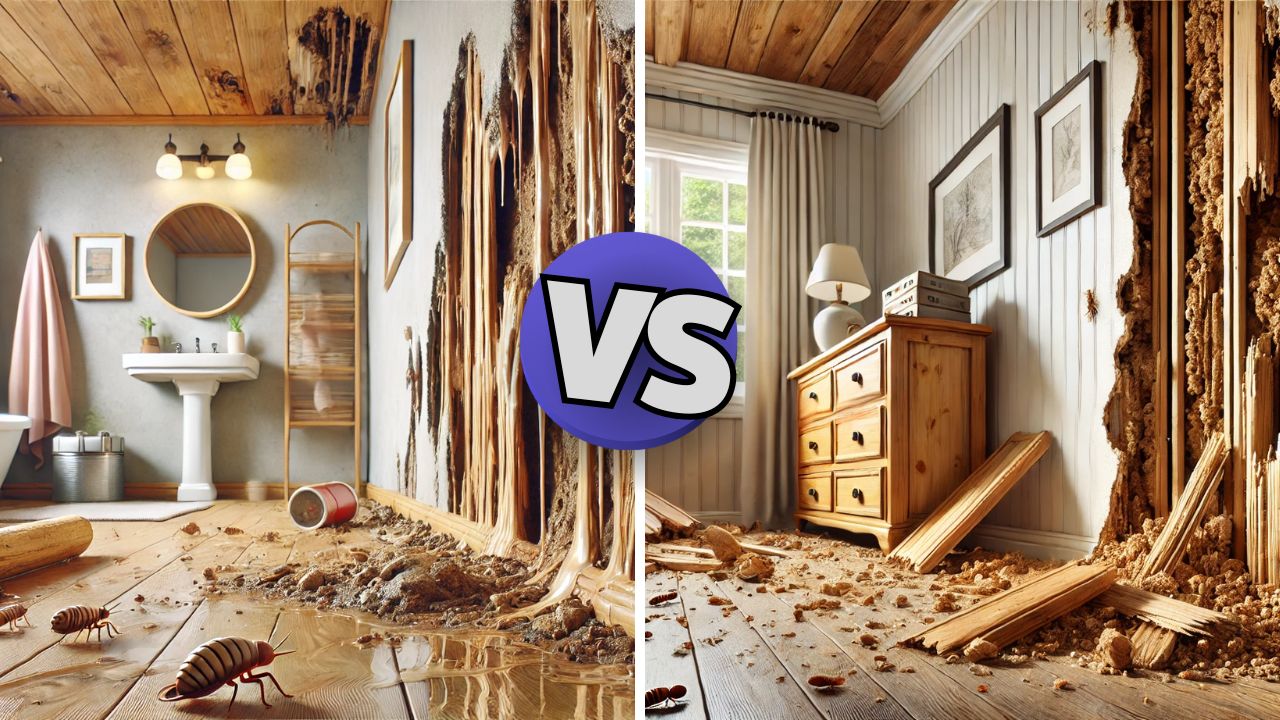 Water damage and termite damage are two of the most serious structural threats to a home. Both can weaken wood, walls, and foundations, leading to costly repairs if not detected early. However, the cause, appearance, and effects of each type of damage differ significantly. While water damage results from prolonged exposure to moisture, termite damage is caused by wood-eating insects tunneling through structures.
In this article, you will get to know the differences between the two to help homeowners take the right steps to prevent or fix the damage before it worsens.
If you’re concerned about potential termite damage, our experts can help— Schedule your Free Pest Inspection Visit today. We’ll assess your home thoroughly and offer reliable solutions to protect your property.
Water damage and termite damage are two of the most serious structural threats to a home. Both can weaken wood, walls, and foundations, leading to costly repairs if not detected early. However, the cause, appearance, and effects of each type of damage differ significantly. While water damage results from prolonged exposure to moisture, termite damage is caused by wood-eating insects tunneling through structures.
In this article, you will get to know the differences between the two to help homeowners take the right steps to prevent or fix the damage before it worsens.
If you’re concerned about potential termite damage, our experts can help— Schedule your Free Pest Inspection Visit today. We’ll assess your home thoroughly and offer reliable solutions to protect your property.
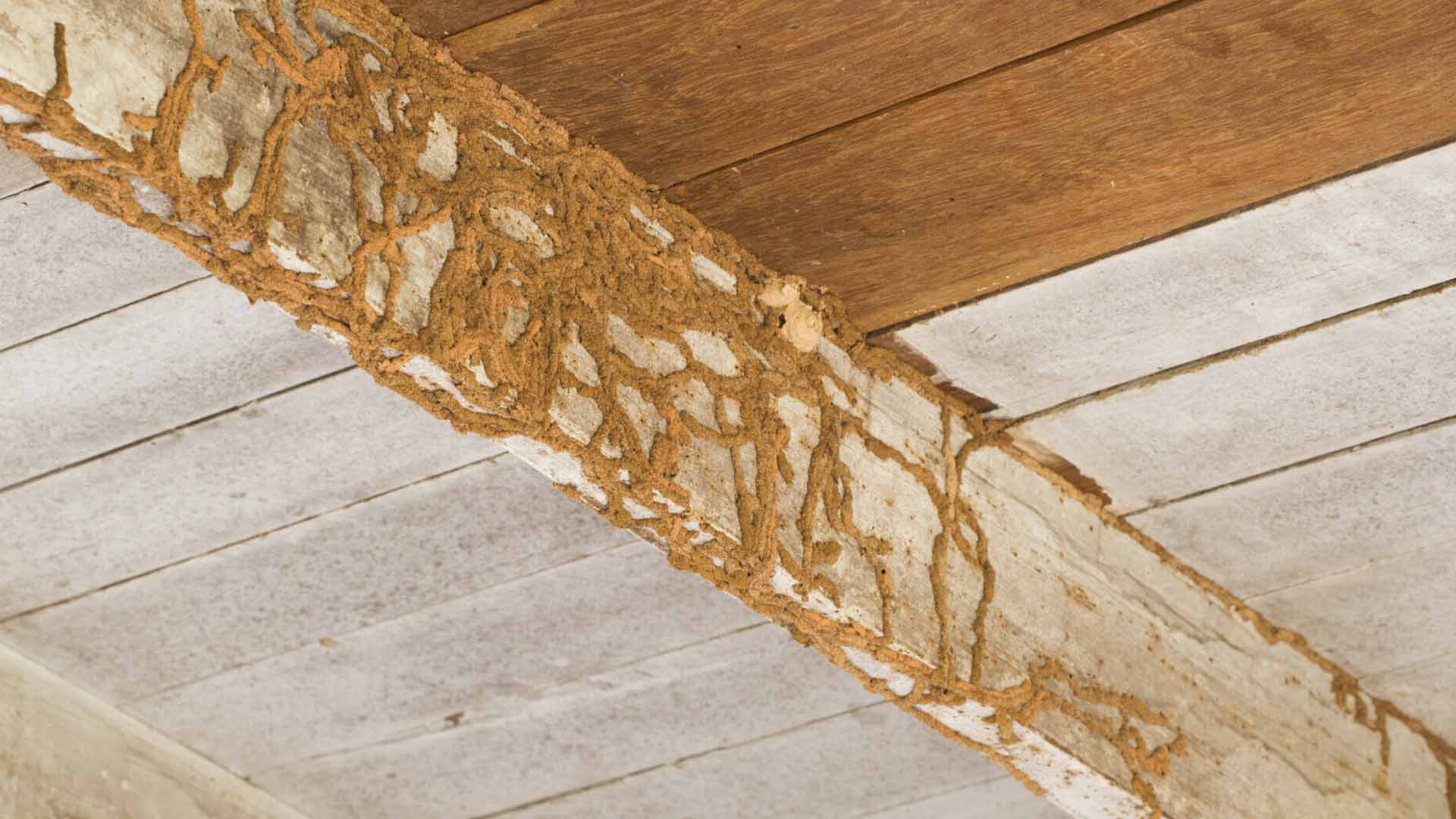

Not getting a solution?
Get your free pest control estimate today!What is Water Damage?
Water damage occurs when excessive moisture weakens or deteriorates a structure. Whether caused by leaks, flooding, or humidity, prolonged water exposure can compromise the integrity of walls, flooring, and wood. Water-damaged materials may swell, crack, or rot over time, leading to secondary issues like mold growth and electrical hazards.
Signs of Water Damage
-
Discoloration: Yellow or brown stains on ceilings and walls are common indicators of water leaks.
-
Peeling or Bubbling Paint: Moisture trapped behind surfaces can cause paint and wallpaper to lift or bubble.
-
Warped or Swollen Wood: Water-logged floors, doors, and furniture may become deformed or misshapen.
-
Musty Odor: Mold and mildew prefer damp environments, creating a strong, unpleasant smell.
-
Soft or Crumbling Material: Water-damaged wood often feels spongy and can break apart easily.
Common Causes of Water Damage
- Water damage is often preventable, but leaks and poor drainage can lead to long-term structural problems. The most common causes include:
-
Leaking Pipes: Slow drips or burst pipes can cause water to collect behind walls and under floors, leading to hidden structural damage.
-
Roof Leaks: Cracked or missing shingles allow rainwater to penetrate the roof, damaging ceilings and insulation.
-
Flooding: Stormwater, clogged gutters, or poor drainage systems can cause water to enter the home and accumulate in basements or foundations.
-
Humidity and Condensation: Inadequate ventilation, especially in basements and attics, can cause moisture to build up and result in mold or wood rot.

What is Termite Damage?
Unlike water damage, which results from environmental factors, termite damage is caused by pests feeding on wood. Termites tunnel through wooden structures, gradually weakening them from the inside out. The longer an infestation goes undetected, the greater the risk of structural instability. There are different type of termites.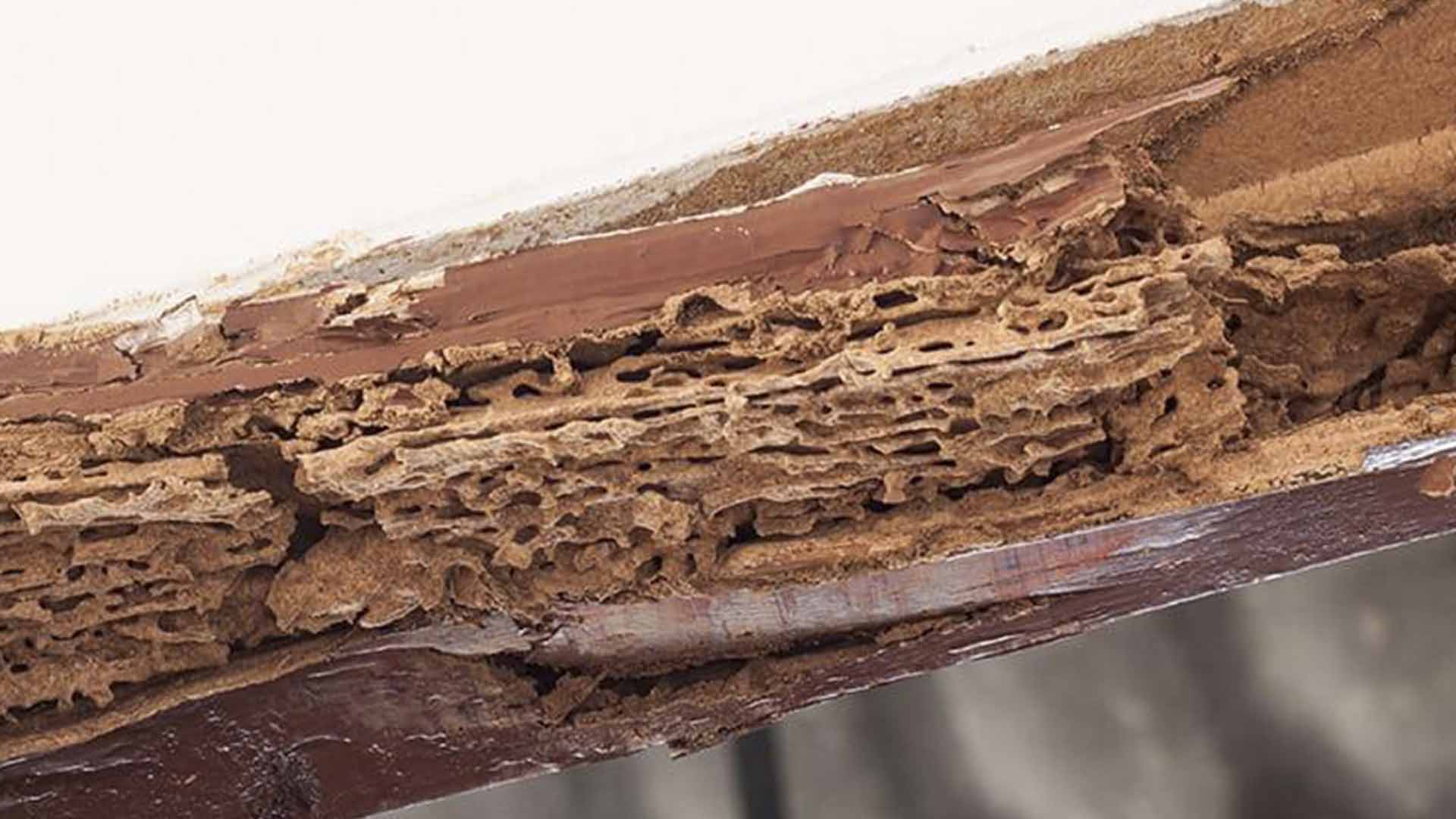
Signs of Termite Damage
- There are various signs and signals of termites and their damage like dropping, exit holes that we have disscussed below:
-
Hollow-Sounding Wood: Knock on wooden surfaces—if they sound hollow, termites may have eaten the interior.
-
Mud Tubes: Subterranean termites build mud tunnels along walls, foundations, and wood structures for protection.
-
Blistered or Darkened Wood: The wood may appear warped or bubbled due to termites feeding beneath the surface.
-
Small Holes and Frass: Tiny exit holes and sawdust-like droppings (frass) indicate termite activity.
-
Swarming Termites: Flying termites, also called swarmers, may appear near windows or lights during mating season.
Common Causes of Termite Damage
- Termites are drawn to environments where they have easy access to food and moisture. The most common factors leading to infestations include:
-
Excess Moisture: Leaky pipes, poor drainage, and high humidity levels create favorable environments for termite colonies to thrive.
-
Wood-to-Soil Contact: Direct contact between wood structures and soil, such as decks or siding, provides easy access for termites.
-
Cracks and Gaps: Small openings in foundations, walls, or around doors and windows serve as entry points for termites.
-
Untreated or Rotting Wood: Old, decayed, or untreated wood is more susceptible to termite attacks and supports rapid colony growth.
Key Differences Between Water Damage and Termite Damage
While water damage and termite damage both weaken wood and other materials, they have distinct characteristics. Below are the differences that can help you determine the right course of action.| Feature | Water Damage | Termite Damage |
|---|---|---|
| Appearance | Yellow or brown stains, bubbling paint, swollen wood | Small holes, blistered or brittle wood, mud tubes |
| Texture | Soft, crumbling wood that feels damp | Hollow-sounding wood with tunneling inside |
| Odor | Musty smell from mold and mildew | No noticeable odor unless mold is present |
| Location | Near plumbing, ceilings, basements, and poorly ventilated areas | Wooden structures, foundations, furniture, and walls |
| Causes | Leaks, floods, condensation, roof damage | Moist environments, untreated wood, cracks in foundation |
| Signs of Infestation | Mold growth, warped materials, paint peeling | Frass, small exit holes, visible termite swarmers |
| Damage Pattern | Irregular water stains and swelling | Tunnel-like interior damage with outer wood intact |
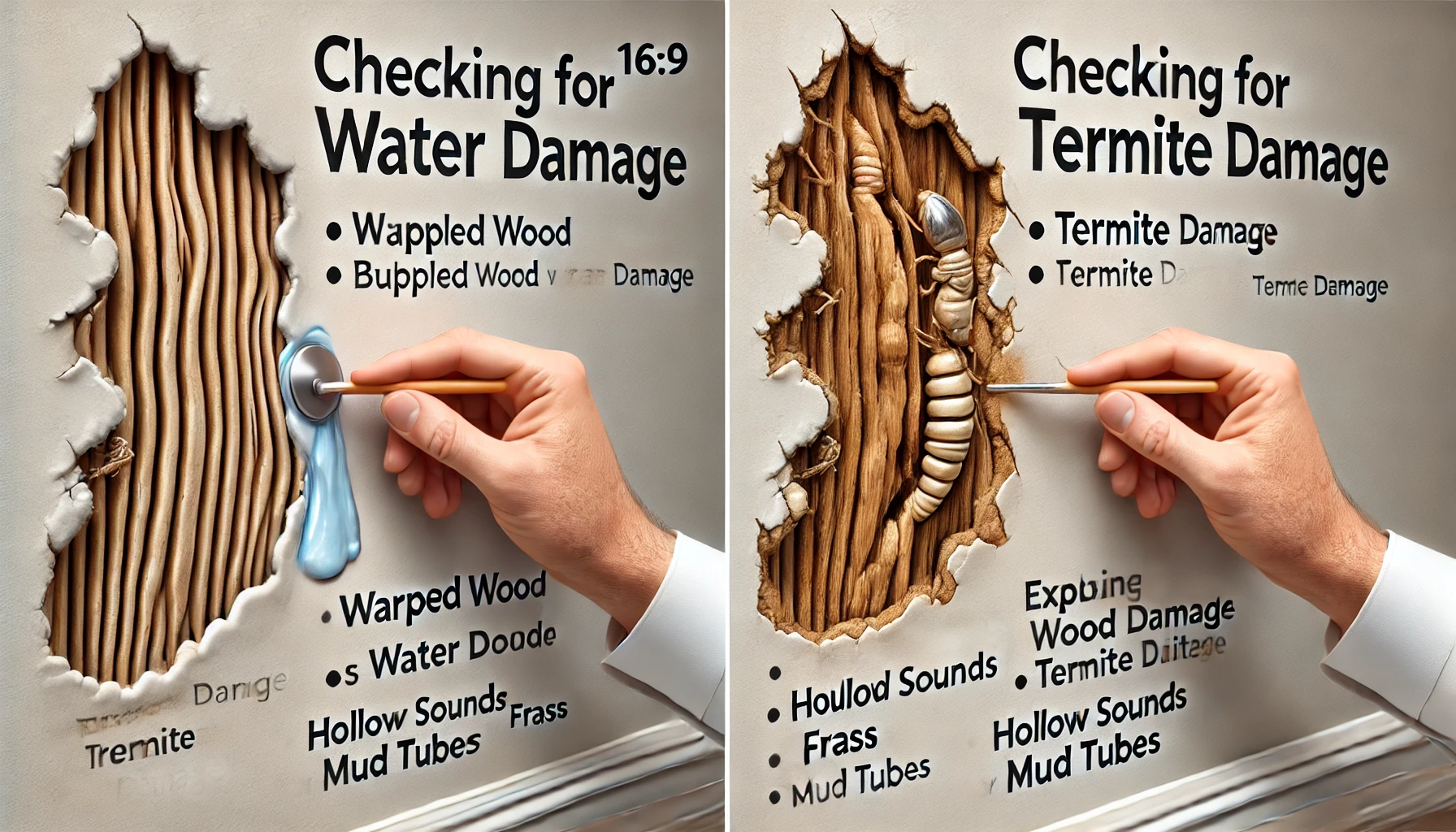
How to Check for Water Damage and Termite Damage?
If you suspect structural damage in your home, a careful inspection can help determine whether water or termites are the culprits.Inspecting for Water Damage
-
Stains and Damp Spots: Water-damaged areas often have yellowish stains and feel damp to the touch.
-
Mold Growth: A musty smell or visible mold indicates persistent moisture issues.
-
Swelling and Warping: Check wooden floors, cabinets, and door frames for signs of warping or swelling.
-
Leaks and Drips: Inspect under sinks, behind appliances, and near windows for signs of leakage.

Inspecting for Termite Damage
-
Hollow or Weak Wood: Press a screwdriver against wooden surfaces—if it sinks in easily, termites may be inside.
-
Mud Tubes on Walls or Foundations: These dirt tunnels are a major sign of subterranean termite activity.
-
Small Holes and Droppings: Look for pin-sized holes and sawdust-like termite frass near wooden structures.
-
Flying Termites or Discarded Wings: Swarmers are a sign of an active colony nearby.

Preventing Water Damage and Termite Damage
Water damage and termite infestations are two of the most common threats to a home’s structural integrity. While water damage can weaken foundations, cause mold growth, and deteriorate building materials, termites silently destroy wood from within, often going unnoticed until significant damage is done. Following preventative measures can help safeguard your home from both water and termite damage.How to Prevent Water Damage
-
Fix Leaks Immediately: Check for and repair any leaking pipes, roofs, or faucets.
-
Maintain Gutters and Drainage: Ensure gutters are clean and direct water away from the foundation.
-
Ventilate Damp Areas: Use dehumidifiers in basements, attics, and crawl spaces to reduce humidity.
-
Seal Windows and Doors: Prevent water intrusion by properly sealing gaps around windows and entryways.
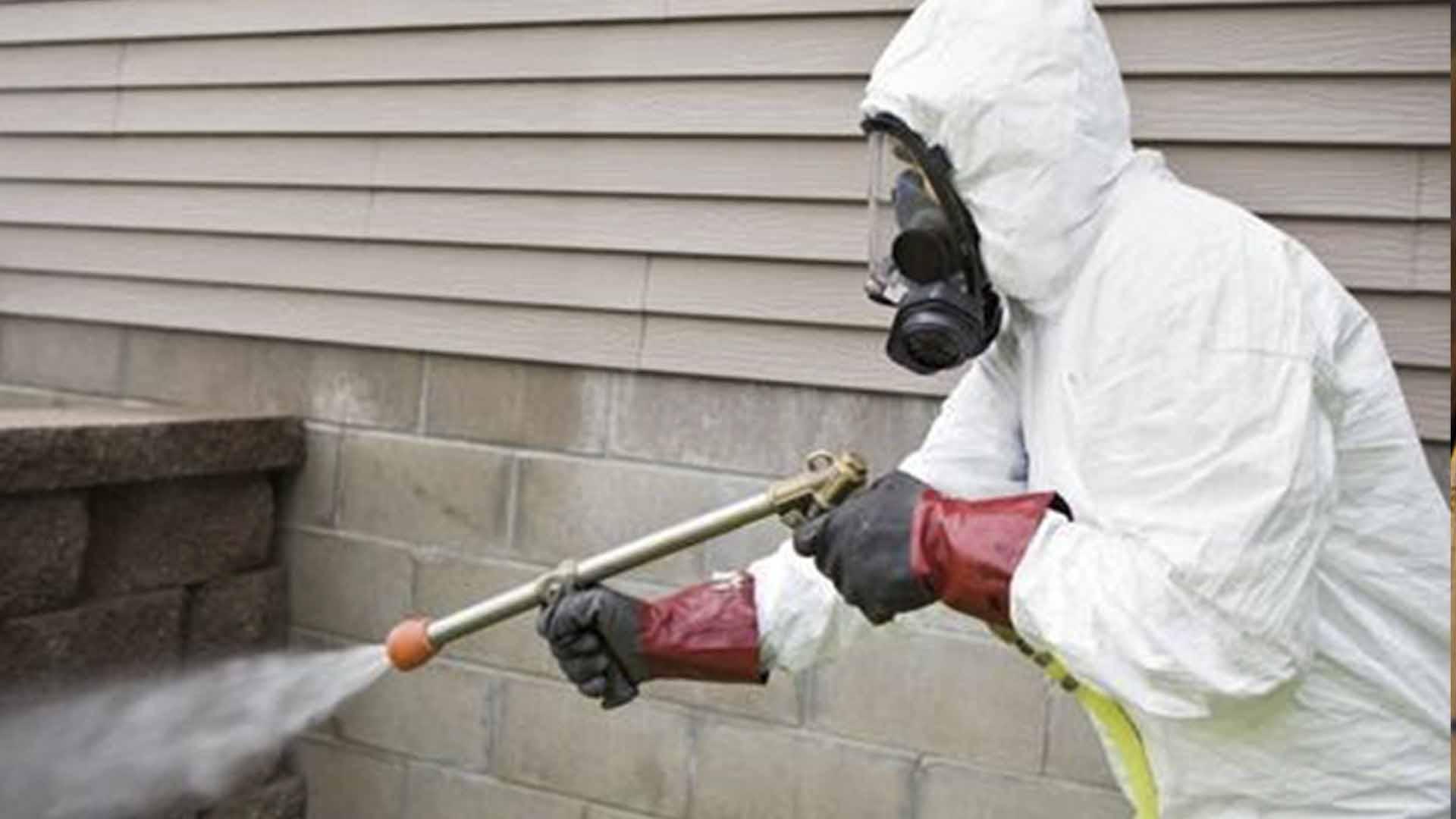
How to Prevent Termite Damage
-
Keep Wood Dry: Repair leaks and reduce excess moisture around your home.
-
Store Wood Properly: Avoid stacking firewood or lumber near your home’s foundation.
-
Use Termite-Resistant Materials: Pressure-treated wood and borate-treated lumber deter termites.
-
Schedule Termite Inspections: Annual inspections by pest control professionals can detect early infestations.
Myths and Facts About Water Damage and Termite Damage
Water damage and termite infestations are two common issues that can severely impact homes and buildings. However, many misconceptions exist about their causes, signs, and solutions. Believing these myths can lead to costly repairs and long-term structural damage. Below, we debunk some of the most common myths and highlight the facts to help you better protect your property.| Myth | Fact |
|---|---|
| Water damage only occurs from major floods. | Water damage can occur from minor leaks or high humidity. |
| Termites only affect old or damaged wood. | Termites can infest any wooden structure, regardless of age. |
| Mold is the only sign of water damage. | Water damage can also lead to warping of wood and peeling of paint. |
| Termite damage is always visible on the surface. | Termites often cause hidden damage inside wood structures. |
| Water damage can be fixed with paint. | Proper repair involves addressing the source of water and replacing damaged materials. |





